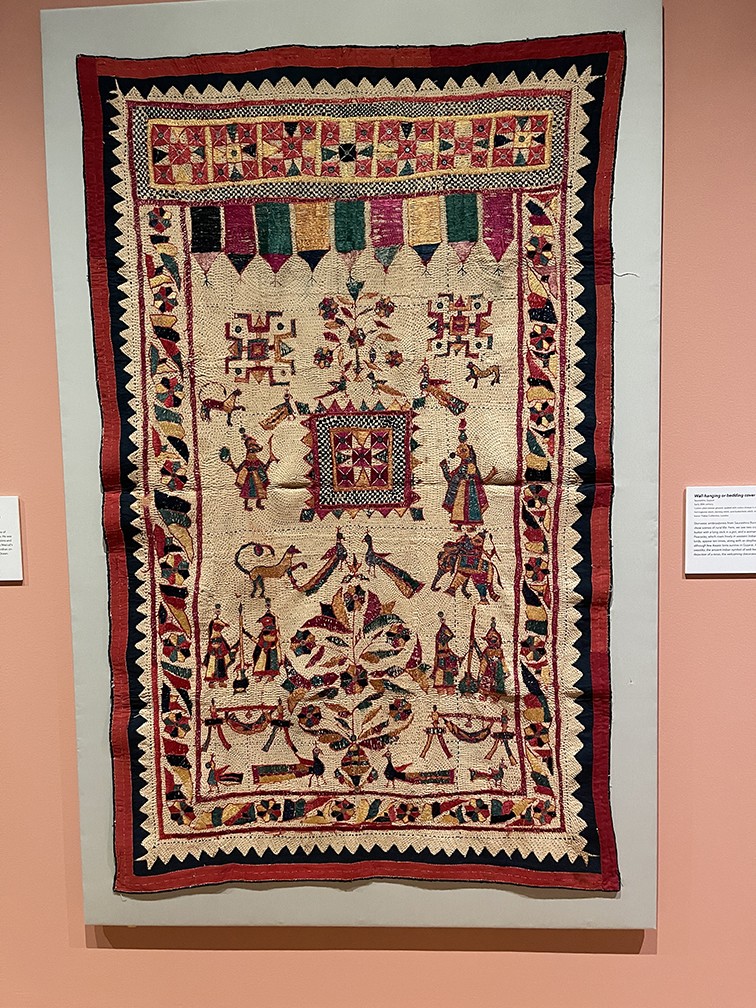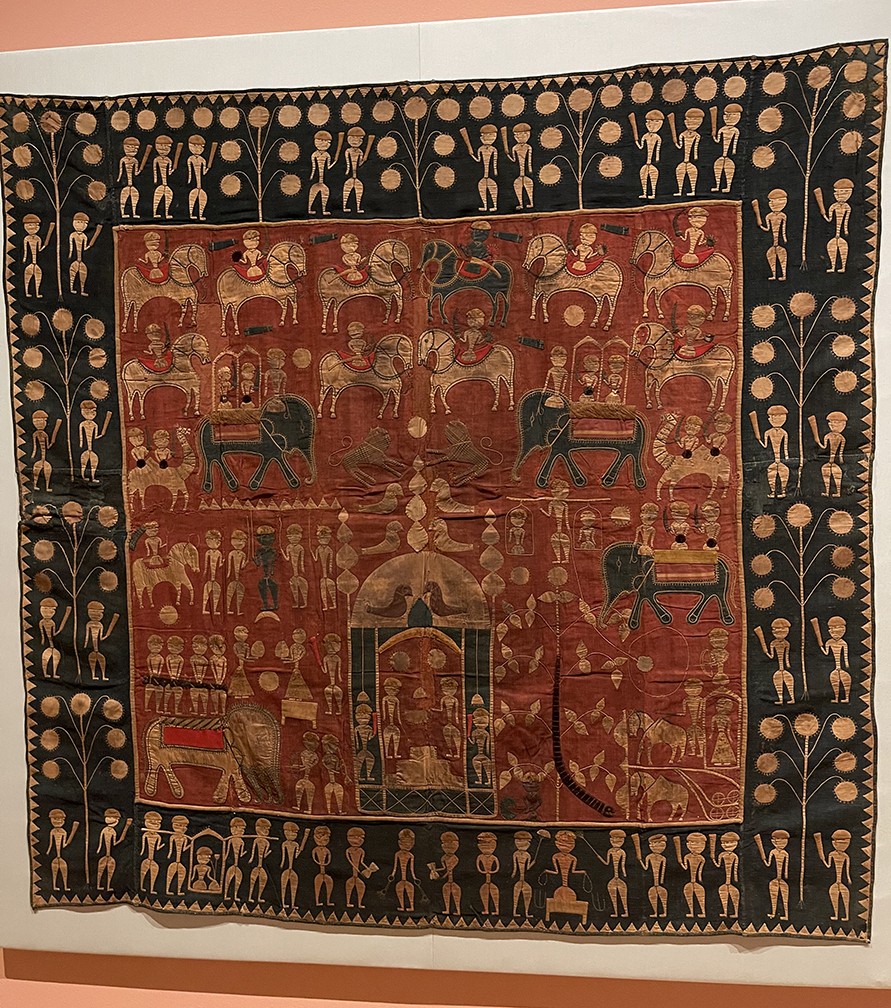Indian Textile
The Indian subcontinent is home to some of the world’s most ancient and illustrious textile traditions. Over the centuries, Indian textile artists have developed an enduring design vocabulary – from simply woven stripes to floral motifs to complex narrative scenes. Indian Textiles: 1,000 Years of Art and Design presents a stunning array of fabrics patterned with India’s most distinctive designs: abstract, floral and figurative.
Some of the region’s oldest known textiles feature abstract patterns such as circles, stripes and zigzags. Examples in the exhibition range from a fragment of a block-printed cloth traded to Egypt around the 15th century to intricately embroidered dresses made in present-day Pakistan’s Swat Valley in the 1800s and 1900s.
Floral patterns in Indian textiles became increasingly widespread in the 13th century, and artists excelled in adapting them for global markets. Embroidered caps from Bengal, for example, were fashionable “at home” wear in 18th-century Europe; a man would often don one in the evening after removing his wig.
Figurative patterns provide a window into different religious beliefs across South Asia. A 15th-century narrative cloth from Gujarat depicts deities and other figures central to the Jain religion. A shrine cloth from Uttar Pradesh honors Sayyid Salar Mas’ud, a Muslim warrior-saint venerated by Muslims and Hindus alike.
.jpg)
.jpg)
.jpg)

.jpg)

.jpg)
.jpg)
.jpg)
.jpg)
.jpg)
.jpg)
.jpg)
.jpg)
.jpg)
.jpg)
.jpg)
.jpg)
.jpg)
.jpg)
.jpg)
.jpg)
.jpg)
.jpg)
.jpg)
.jpg)





